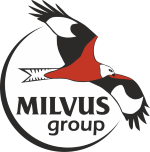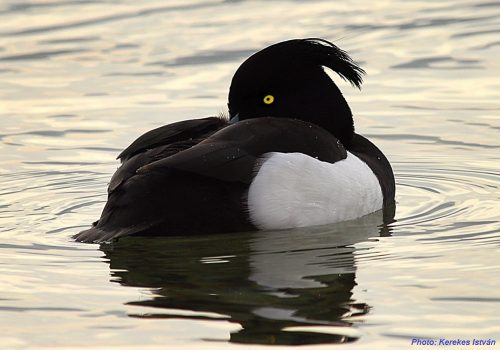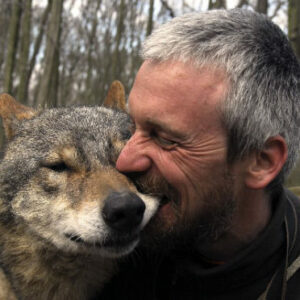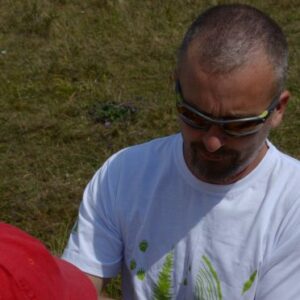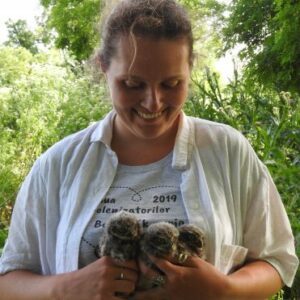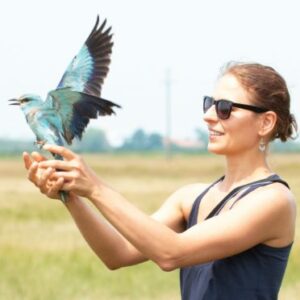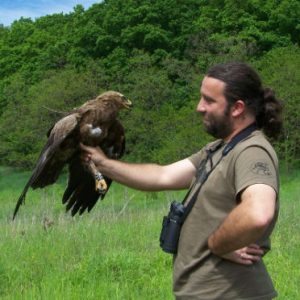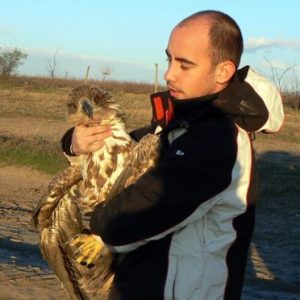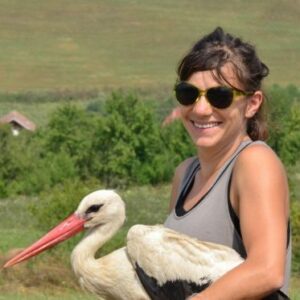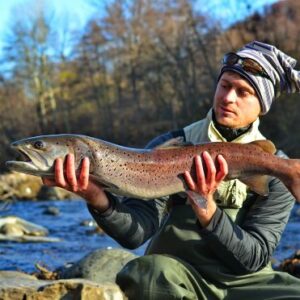 This year, between 19-21 October ”Milvus Group” Bird and Nature Protection Association organized the 3rd Romanian Ornithological Marathon, which took place, as in the previous year at Cefa Fishponds (Bihor County). Nine teams with 2-4 persons (totally 29 people) registered at the contest, but there were also event participants who didn’t register.
This year, between 19-21 October ”Milvus Group” Bird and Nature Protection Association organized the 3rd Romanian Ornithological Marathon, which took place, as in the previous year at Cefa Fishponds (Bihor County). Nine teams with 2-4 persons (totally 29 people) registered at the contest, but there were also event participants who didn’t register.

The marathon started on the 20th at 9:30 AM and finished on the 21st at 9:30 AM. During these 24 hours the participant teams registered all the species seen or heard in their special field notebooks. Despite the fact the contest was organized in late autumn, the warm sunny weather with no wind was very favourable for the event participants. The 9 teams registered totally (saw or heard) a number of 124 bird species. Between this number and the number of species observed by the winner team there is a difference of 27 species, which means that even the winner team has seen only 78,2% of the totally registered species.
From the evaluation of the results it turned out that during the marathon 33 out of the 124 species were seen by all 9 teams, which is 26,6% of the species list. At the same time there were 21 species (16,9% of the total list) seen by only one of the teams.
Beside the 124 species observed during the event there were three species (Black Tern, Long-legged Buzzard and Saker Falcon) which were only seen by the organizers (Botoș Arthur, Daróczi J. Szilárd and Nagy Attila).
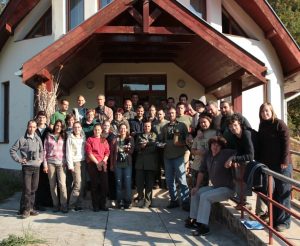
It is interesting that the difference in number of the registered species between the first two teams was a very distant, means more then ten species; the difference was not as obvious between the further teams.
From the 124 observed species no any was considered rarities for the country or for the region. During the event several species were observed which we can consider locally interesting or scares species for this region. These are the Peregrine Falcon, Merlin, Jack Snipe, Black Woodpecker and Dunnock. Other species we consider important to be mention as interesting sightings comparing with the late autumn period were the Little Egret, Glossy Ibis, Hobby, Temminck’s Stint, Wood Sandpiper, Cuckoo, Great Reed Warbler, Willow Warbler and the Whinchat.
Hereinafter we present the results of the registered teams. The first number indicates the total number of observed species by the participant team, while the second number shows the number of species only heard, not seen.
- The Handicaps: Dehelean Andreea, Dehelean Luca, Gyékény Gertrúd – 91/6 = 97
- Mescaline: Fülöp Attila, Miholcsa Tamás, Ölvedi Szilárd, Zeitz Róbert – 81/3 = 84
- Satu Mare Guys: Bărbos Lőrinc, Kiss István, Osváth Gergely – 73/2 = 75
- Clangula: Kiss Arnold, Marton Attila, Sándor Krisztina – 66/4 = 70
- Kalotaszeg: Böndi Erzsébet, Böndi László, Csép Antal – 65/2 = 67
- Rapaces sp.: Bakó Beáta, Csiszár Mónika, Dósa Attila, Péter Zsolt – 60/5 = 65
- The Strebers: Aczél-Fridrich Zsuzsanna, Hegyeli Zsolt, Nagy András Attila – 60/4 = 64
- Trills: Incze Anna, Kastal Ágnes, Patkó Erika – 59/2 = 61
- Vereb: Benkő Zoltán, Fülöp Tihamér, Sugár Szilárd – 53/1 = 54
The territory was enough large with diverse habitats, so one could do observations on the fishponds, in forests, bushy and scrog areas, moorlands and different grasslands.
Furthermore we present the list of the species observed during the marathon. The number after the species name indicates the number of teams that observed the species (both heard and seen).
We thank every participant for taking part on this event, for fair playing, and searching for birds assiduously. We accord hanks and congratulations to the winner teams (the first three) in this way too!
We also want to thank for they help for our partners, theCefaNaturalPark’s Administration and the Cefa Fishpond’s Administration Pro-Acva S.A.
The species list observed by the participants
- Cygnus olor / 9
- Anser albifrons / 7
- Anser anser / 8
- Anas penelope / 4
- Anas strepera / 5
- Anas crecca / 9
- Anas platyrhynchos / 9
- Anas acuta / 2
- Anas clypeata / 8
- Aythya ferina / 9
- Aythya nyroca / 9
- Aythya fuligula / 6
- Phasianus colchicus / 9
- Tachybaptus ruficollis / 6
- Podiceps cristatus / 9
- Podiceps nigricollis / 2
- Phalacrocorax carbo / 9
- Phalacrocorax pygmeus / 8
- Botaurus stellaris / 1
- Nyctycorax nycticorax / 1
- Egretta garzetta / 1
- Egretta alba / 9
- Ardea cinerea / 9
- Plegadis falcinellus / 1
- Haliaeetus albicilla / 2
- Circus aeruginosus / 9
- Circus cyaneus / 5
- Accipiter gentilis / 3
- Accipiter nisus / 8
- Buteo buteo / 9
- Falco tinnunculus / 8
- Falco subbuteo / 5
- Falco columbarius / 1
- Falco peregrinus / 3
- Rallus aquaticus / 5
- Gallinula chloropus / 3
- Fulica atra / 9
- Grus grus / 5
- Charadrius dubius / 3
- Charadrius hiaticula / 2
- Pluvialis squatarola / 5
- Pluvialis apricaria / 4
- Vanellus vanellus / 9
- Calidris minuta / 4
- Calidris alpina / 3
- Calidris temminckii / 1
- Philomachus pugnax / 8
- Lymnocryptes minimus / 1
- Gallinago gallinago / 4
- Numenius arquata / 9
- Numenius phaeopus / 1
- Tringa erythropus / 5
- Tringa stagnatilis / 1
- Tringa nebularia / 1
- Tringa ochropus / 1
- Tringa glareola / 1
- Actitis hypoleucos / 2
- Chroicocephalus ridibundus / 9
- Larus canus / 5
- Larus michahellis / 9
- Larus cachinnans / 6
- Columba livia f. domestica / 8
- Columba palumbus / 2
- Streptopelia decaocto / 9
- Cuculus canorus / 1
- Athene noctua / 2
- Asio otus / 8
- Alcedo atthis / 6
- Picus canus / 1
- Picus viridis / 7
- Dryocopus martius / 2
- Dendrocopos major / 9
- Dendrocopus syriacus / 3
- Dendrocopos medius / 4
- Dendrocopos minor / 2
- Alauda arvensis / 3
- Hirundo rustica / 2
- Anthus trivialis / 1
- Anthus pratensis / 2
- Anthus spinoletta / 2
- Motacilla alba / 3
- Troglodytes troglodytes / 9
- Prunella modularis / 1
- Erithacus rubecula / 9
- Phoenicurus ochruros / 8
- Saxicola rubetra / 2
- Saxicola torquata / 7
- Turdus merula / 8
- Turdus pilaris / 4
- Turdus philomelos / 3
- Turdus viscivorus / 1
- Acrocephalus schoenobaenus / 2
- Acrocephalus arundinaceus / 2
- Phylloscopus collybita / 7
- Phylloscopus trochilus / 3
- Regulus regulus / 2
- Panurus biarmicus / 7
- Aegithalos caudatus / 9
- Cyanistes caeruleus / 9
- Parus major / 9
- Poecile palustris / 2
- Sitta europaea / 9
- Remiz pendulinus / 7
- Lanius excubitor / 2
- Garrulus glandarius / 9
- Pica pica / 9
- Corvus monedula / 1
- Corvus frugilegus / 6
- Corvus cornix / 9
- Corvus corax / 4
- Sturnus vulgaris / 9
- Passer domesticus / 9
- Passer montanus / 9
- Fringilla coelebs / 7
- Fringilla montifringilla / 1
- Carduelis chloris / 7
- Carduelis carduelis / 9
- Carduelis spinus / 4
- Carduelis cannabina / 3
- Pyrrhula pyrrhula / 1
- Coccothraustes coccothraustes / 5
- Emberiza citrinella / 6
- Emberiza schoeniclus / 9
- Miliaria calandra / 1
